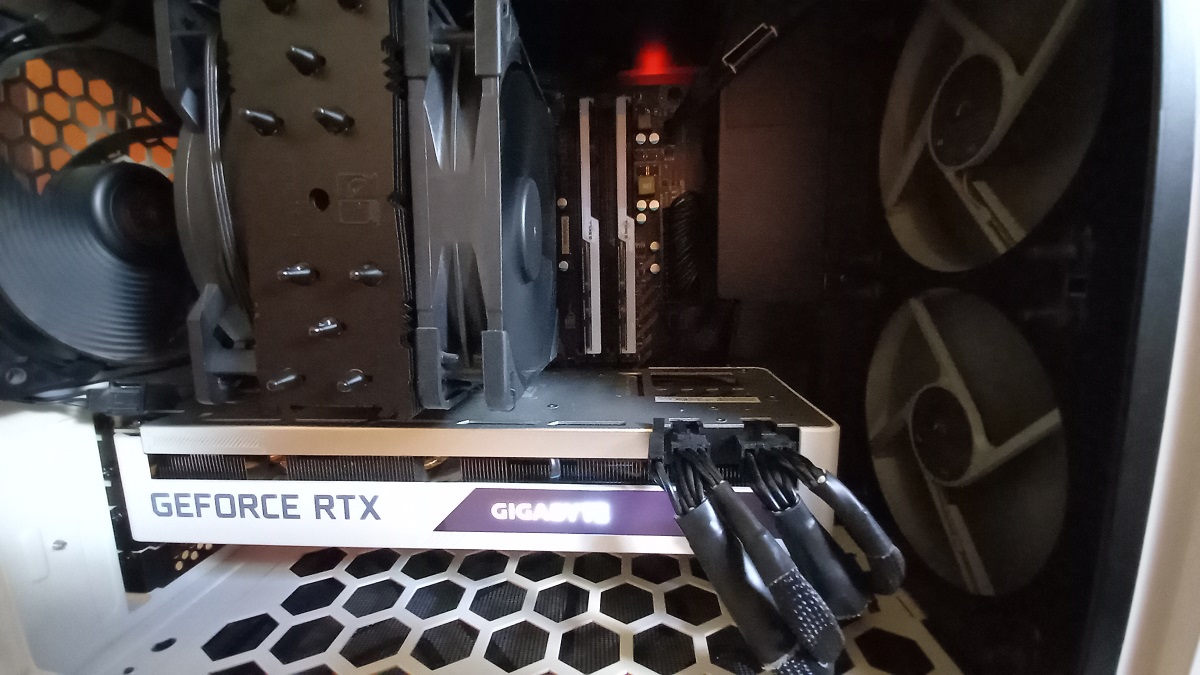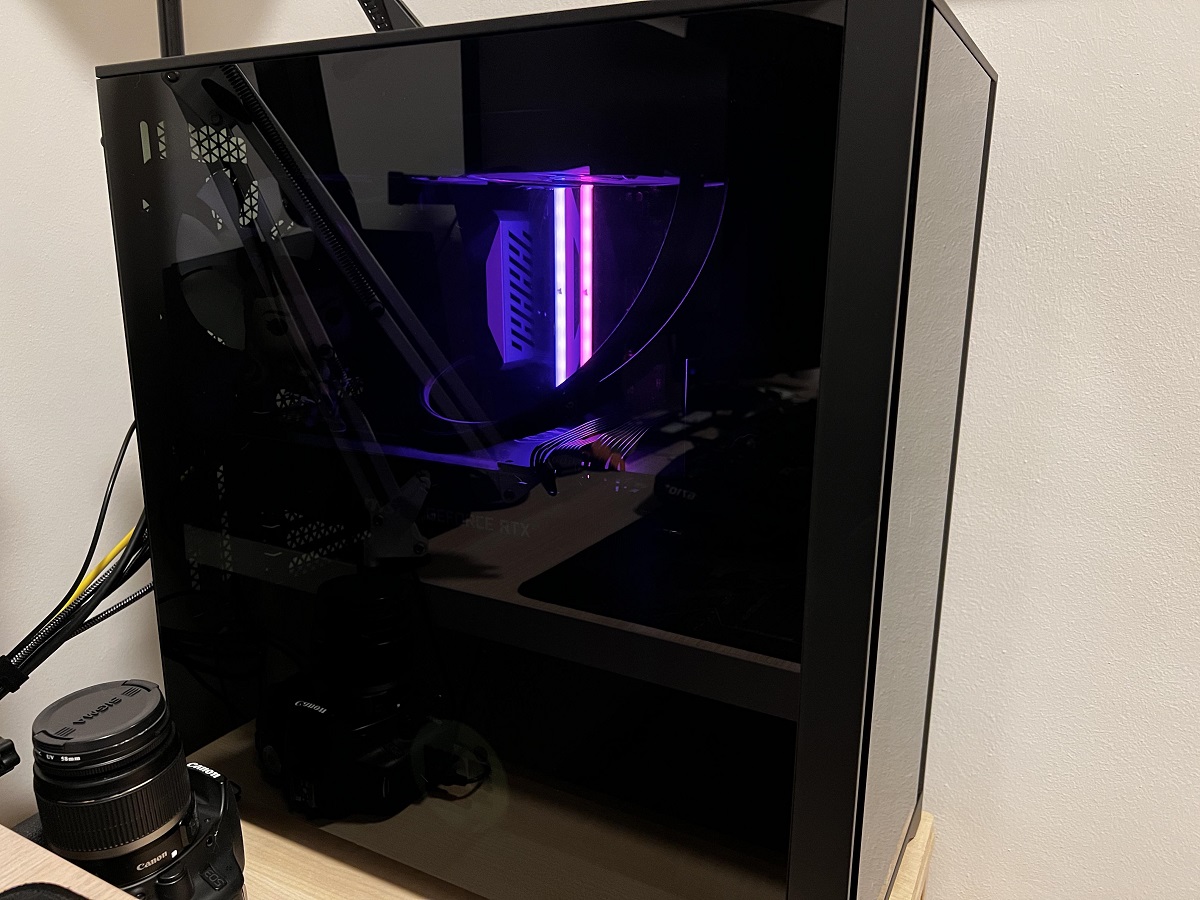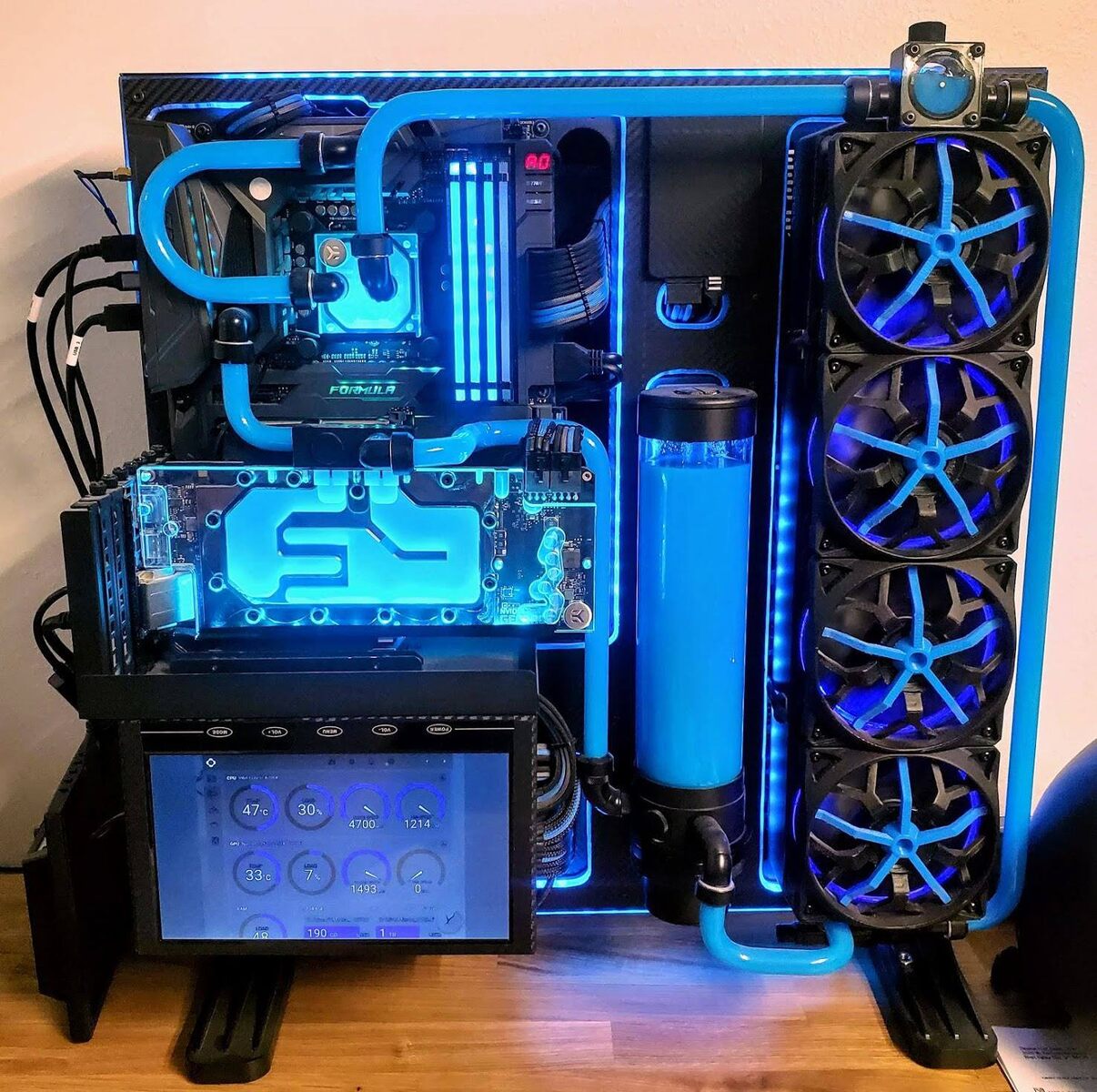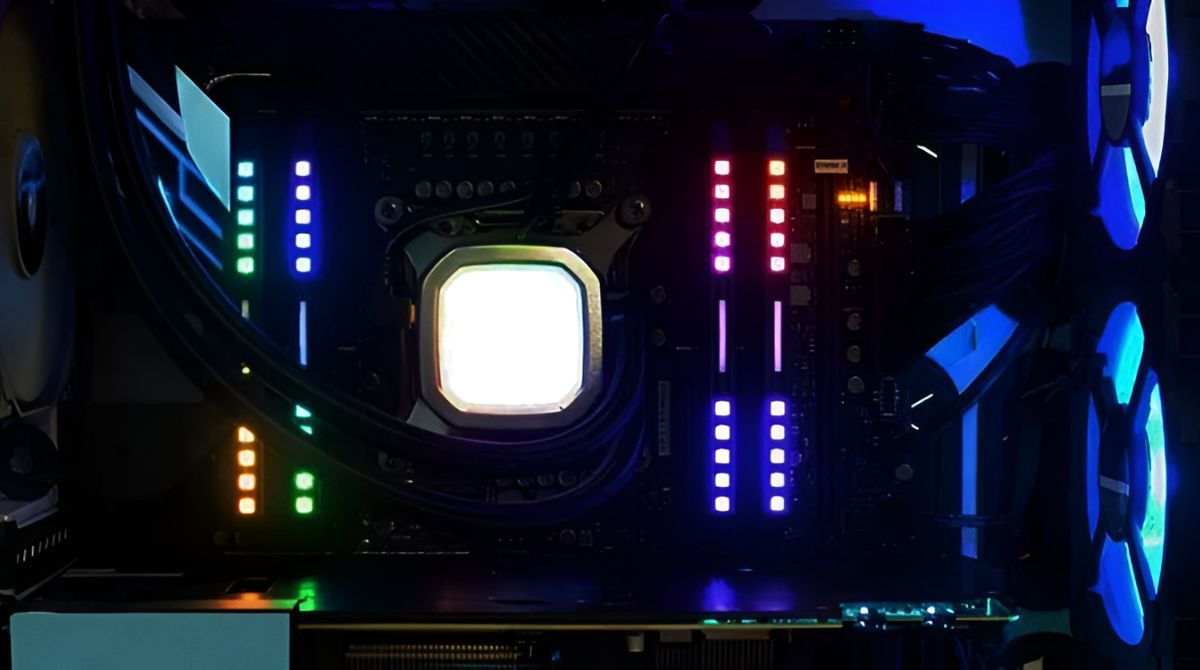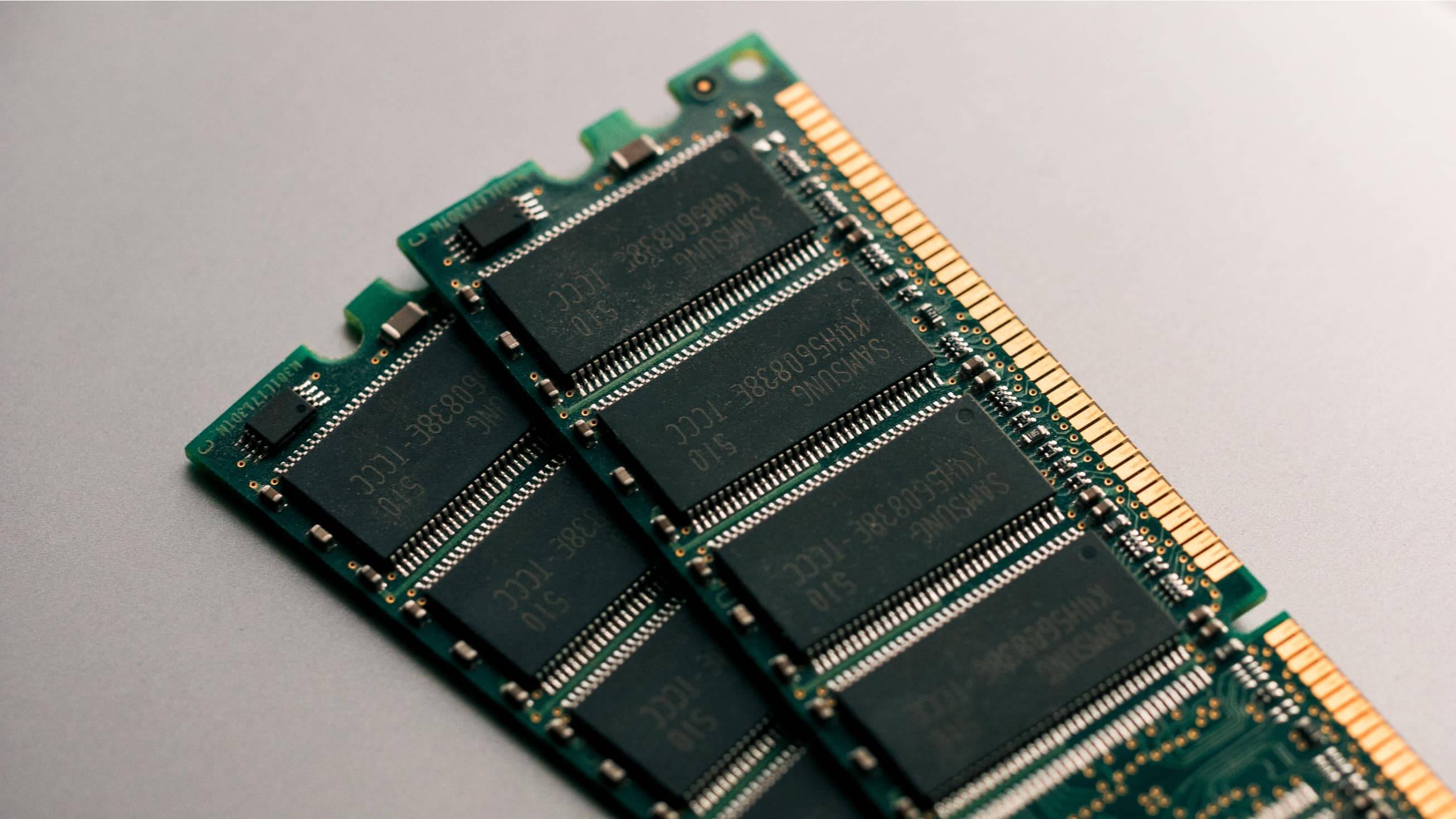Introduction
Welcome to the world of RGB RAM! The acronym RGB stands for Red, Green, and Blue, the primary colors used in creating a wide range of colors. RGB RAM is a type of computer memory module that features colorful LED lighting, adding a vibrant visual element to your PC setup. This lighting effect has become increasingly popular among gamers, enthusiasts, and anyone looking to personalize their computer system.
However, there may be situations where you want to tone down or turn off the RGB lighting on your RAM modules. Whether it’s to conserve energy, minimize distractions, or simply prefer a more subdued aesthetic, there are several methods you can use to achieve this.
In this article, we will explore different techniques for turning off RGB RAM. We will discuss software control options, BIOS settings, and even physical disconnecting of RGB modules. With these methods, you can regain control over the lighting effects and customize your PC according to your preferences.
Before we dive into the details of each method, it’s important to note that the availability of these options may vary depending on your specific motherboard and RGB RAM modules. It’s always a good idea to consult the user manual or manufacturer’s website for your specific hardware to ensure compatibility and access to the desired settings.
Now that we have laid the groundwork, let’s explore how to turn off that dazzling RGB RAM and bring a touch of simplicity back to your computer setup.
What is RGB RAM?
RGB RAM, also known as RGB-enabled RAM or RGB memory modules, is a type of computer memory that combines traditional RAM functionality with built-in LED lighting. These lighting effects allow for a visually appealing and customizable look for your computer system.
The RGB lighting on RAM modules is controlled through specialized software or motherboard settings, allowing users to choose from a wide range of colors, patterns, and even synchronization with other RGB components in the system. Some RAM modules also feature additional lighting effects, such as pulsating or animated patterns, to further enhance the aesthetics.
The LED lights on RGB RAM modules are typically located on the top surface of the module, facing upwards when installed in the motherboard. This placement ensures that the lighting is visible and can illuminate the interior of your computer case. The LED lights can be set to a specific color, cycle through a spectrum of colors, or even react to system activity, such as CPU temperature or music playback.
One important thing to note is that the RGB lighting on RAM modules is separate from the primary function of the RAM itself, which is to store and retrieve data for the computer system. The RGB lighting does not impact the performance or speed of the RAM modules, but instead adds an aesthetic element to the overall computer setup.
RGB RAM has gained immense popularity among gamers, computer enthusiasts, and individuals who enjoy customizing their PC builds. The ability to personalize the lighting effects and create a unique visual experience has made RGB RAM a sought-after component in modern computer systems.
Now that we have a clear understanding of what RGB RAM is, let’s explore the reasons why you might want to turn off the RGB lighting and how to do it.
Why would you want to turn off RGB RAM?
RGB RAM is undeniably eye-catching and adds a vibrant touch to your computer setup. However, there are several reasons why you might want to turn off the RGB lighting on your RAM modules:
- Energy Conservation: RGB lighting draws power from your system, and if you’re conscious about energy consumption or using a laptop on battery power, turning off the RGB RAM can help conserve energy.
- Reducing Distractions: While RGB lighting can be visually appealing, it can also be distracting, especially when you’re trying to focus on tasks that require concentration. Turning off the RGB RAM can create a more subdued and distraction-free environment.
- Matching Aesthetic Preferences: Some users prefer a more minimalistic or uniform look for their computer setup. By turning off the RGB RAM, you can achieve a cleaner and more cohesive aesthetic that aligns with your personal style.
- Avoiding Compatibility Issues: In rare cases, RGB software or motherboard settings may cause conflicts or compatibility issues with other system components. Turning off the RGB RAM can help troubleshoot these issues and ensure smooth system operation.
- Extended Lifespan: While RGB LEDs are designed to last a long time, turning off the RGB RAM when not in use can help extend the overall lifespan of the lighting components, reducing the chances of any premature failures or issues.
It’s essential to note that turning off the RGB RAM does not affect the performance or functionality of the RAM modules themselves. The RAM will continue to function as normal, storing and retrieving data for your system, regardless of whether the RGB lighting is active or not.
Now that we understand the reasons for turning off RGB RAM, let’s explore the various methods you can use to achieve this.
Method 1: Software Control
One of the easiest ways to turn off RGB RAM is through software control. Many motherboard manufacturers provide dedicated software that allows users to customize and control the RGB lighting effects on their system components, including RAM modules.
Here’s a step-by-step guide on how to turn off RGB RAM using software control:
- Identify the software: Determine the brand and model of your motherboard. Visit the manufacturer’s website to locate and download the appropriate software for controlling RGB lighting. Common examples include Asus Aura Sync, Gigabyte RGB Fusion, MSI Mystic Light, or Corsair iCUE.
- Install the software: Once you’ve downloaded the software, follow the installation instructions provided by the manufacturer. This typically involves running the installer file and following the prompts to complete the installation process.
- Open the software: Locate the installed software on your computer and launch it. You may need to search for it in your Start menu or find it in your system tray.
- Select the RAM module: Within the software, there should be an option to select individual components to control. Look for the RAM module or RGB RAM in the list of available devices and click on it to access the RGB settings.
- Turn off RGB: Once you’ve selected the RGB RAM module, look for an option or toggle switch that allows you to turn off the RGB lighting. Depending on the software, this option may be labeled as “Off”, “Disable”, or a similar term.
- Apply the changes: After turning off the RGB lighting, make sure to apply the changes within the software. This step ensures that the updated settings are saved and take effect immediately on your RGB RAM module.
It’s important to note that the steps and interface may vary depending on the software and motherboard manufacturer. Refer to the user manual or online documentation provided by the manufacturer for specific instructions on using the software control for your RGB RAM.
Now that we’ve explored software control, let’s move on to the next method: BIOS settings.
Method 2: BIOS Settings
If software control is not an option or you prefer a more hardware-based approach, you can also turn off RGB RAM using the BIOS (Basic Input/Output System) settings of your motherboard. BIOS settings provide low-level control over various hardware components, including RGB lighting.
Here’s a step-by-step guide on how to turn off RGB RAM using BIOS settings:
- Access the BIOS: Restart your computer and enter the BIOS settings. This is typically done by pressing a specific key during the boot process, such as Del, F2, or F10. Refer to your motherboard’s user manual for the exact key and instructions.
- Navigate to the RGB settings: Once in the BIOS settings, look for a section related to RGB lighting or hardware configuration. The exact location and label may vary depending on your motherboard model, but it is usually found under a section labeled “Peripherals”, “Advanced”, or “Hardware Configuration”.
- Locate the RAM settings: Within the RGB or hardware configuration section, look for the specific settings related to RAM modules. This may be labeled as “DRAM LED”, “Memory RGB”, or something similar.
- Turn off RGB: Once you’ve found the RAM settings, look for an option or toggle switch that allows you to disable the RGB lighting specifically for the RAM modules. This option may be labeled as “Off”, “Disabled”, or a similar term.
- Save and exit: After turning off the RGB lighting, save the changes you made in the BIOS settings. This option is usually located on a dedicated page or through a key combination, such as pressing F10 to save and exit.
It’s important to note that the BIOS interface and settings may vary depending on the motherboard manufacturer and model. The steps provided are general guidelines, so refer to your motherboard’s user manual or online documentation for specific instructions on accessing and navigating the BIOS settings.
Now that we’ve covered BIOS settings, let’s move on to the third method: physical disconnecting of RGB modules.
Method 3: Physical Disconnect
If you want a simple and immediate way to turn off RGB RAM without relying on software or BIOS settings, you can physically disconnect the RGB modules from your system. This method involves opening your computer case and detaching the RGB RAM modules from the motherboard.
Here’s a step-by-step guide on how to turn off RGB RAM using the physical disconnect method:
- Prepare for the process: Before you begin, ensure that you have properly shut down your computer and disconnected it from any power source. Take necessary precautions to prevent static electricity, such as wearing an anti-static wristband or touching a grounded metal surface.
- Remove the side panel: Open your computer case by removing the side panel. This can usually be done by unscrewing a few screws or sliding a latch, depending on the design of your case. Refer to your case’s user manual for specific instructions.
- Locate the RAM modules: Identify the RGB RAM modules installed in your system. They are typically located next to the CPU socket or in close proximity to the motherboard’s DIMM slots.
- Disconnect the modules: Using gentle pressure, push down on the side levers or tabs holding the RAM modules in place. The modules will pop up slightly, allowing you to carefully remove them from the DIMM slots.
- Store or replace the modules: Once the RGB RAM modules are disconnected, you can choose to store them safely or replace them with non-RGB RAM modules if desired.
- Close the case: Reattach the side panel to your computer case and secure it properly using the screws or latches.
- Start up your computer: Power on your computer and check whether the RGB RAM lighting is turned off. Without the modules connected, the RGB lighting should no longer be active.
It’s important to note that physically disconnecting the RGB RAM modules will completely disable the lighting effects, but it may also impact the overall aesthetics of your computer. Consider this method if you no longer wish to use RGB lighting for your RAM or if you plan to replace the RGB modules with non-RGB ones.
Now that we’ve covered the physical disconnect method, let’s move on to some tips for troubleshooting RGB RAM issues.
Tips for Troubleshooting
While turning off RGB RAM may be a straightforward process, there can sometimes be issues or complications that arise. Here are some helpful tips for troubleshooting RGB RAM-related problems:
- Update software and firmware: Make sure to keep your motherboard’s software and firmware up to date. Manufacturers often release updates that address compatibility issues and introduce new features. Updating your software can help resolve any RGB RAM-related problems.
- Check for conflicts: If you’re experiencing issues with controlling or turning off RGB RAM, make sure there are no conflicts with other software or hardware components. Disabling other RGB software or adjusting settings for other RGB components may help resolve conflicts and ensure smooth operation.
- Verify motherboard compatibility: Ensure that your motherboard supports RGB RAM and has the necessary connectors to control the lighting effects. Consult the motherboard’s user manual or manufacturer’s website to confirm compatibility and access to RGB settings.
- Inspect cable connections: If your RGB RAM is not responding to software control or BIOS settings, check the cable connections between the RAM modules and the motherboard. Ensure they are securely connected and seated properly in the DIMM slots.
- Seek manufacturer support: If you’re unable to resolve the issue on your own, reach out to the manufacturer’s support team for assistance. They can provide specific troubleshooting steps based on your hardware and help resolve any technical issues you may encounter.
Remember that troubleshooting steps and solutions may vary depending on your specific hardware configuration and software setup. It’s always a good idea to consult the user manual or online resources provided by the motherboard and RGB RAM module manufacturers for detailed troubleshooting guidance.
With these tips in mind, you should be able to effectively troubleshoot and resolve any issues related to RGB RAM control and customization.
Conclusion
RGB RAM adds a captivating visual element to your computer setup, allowing for personalized and eye-catching aesthetics. However, there may be times when you want to turn off the RGB lighting. Whether it’s to conserve energy, reduce distractions, match your preferred aesthetic, troubleshoot compatibility issues, or extend the lifespan of the lighting components, there are several methods you can use.
Software control offers a convenient and customizable way to manage RGB RAM lighting through dedicated software provided by motherboard manufacturers. Through the software interface, you can easily turn off the RGB lighting and adjust settings according to your preferences.
If software control is not available or you prefer a more hardware-based approach, BIOS settings provide low-level control over hardware components, including RGB RAM. Navigating through the BIOS settings allows you to locate the specific RAM settings and disable the RGB lighting at a system level.
For those looking for an immediate solution, physically disconnecting the RGB RAM modules offers a straightforward method. By opening your computer case and removing the modules, you can disable the RGB lighting entirely.
When troubleshooting RGB RAM issues, it’s crucial to keep your software and firmware up to date, check for conflicts with other components, and ensure motherboard compatibility. Inspecting cable connections and seeking support from the manufacturer can also help resolve any problems you encounter.
Ultimately, the decision to turn off RGB RAM is a personal one, depending on your preferences, needs, and the overall look you want to achieve for your computer setup. Whether you choose software control, BIOS settings, or physical disconnect, you now have the tools and knowledge to take control of your RGB RAM and customize your computer system to suit your style and needs.







